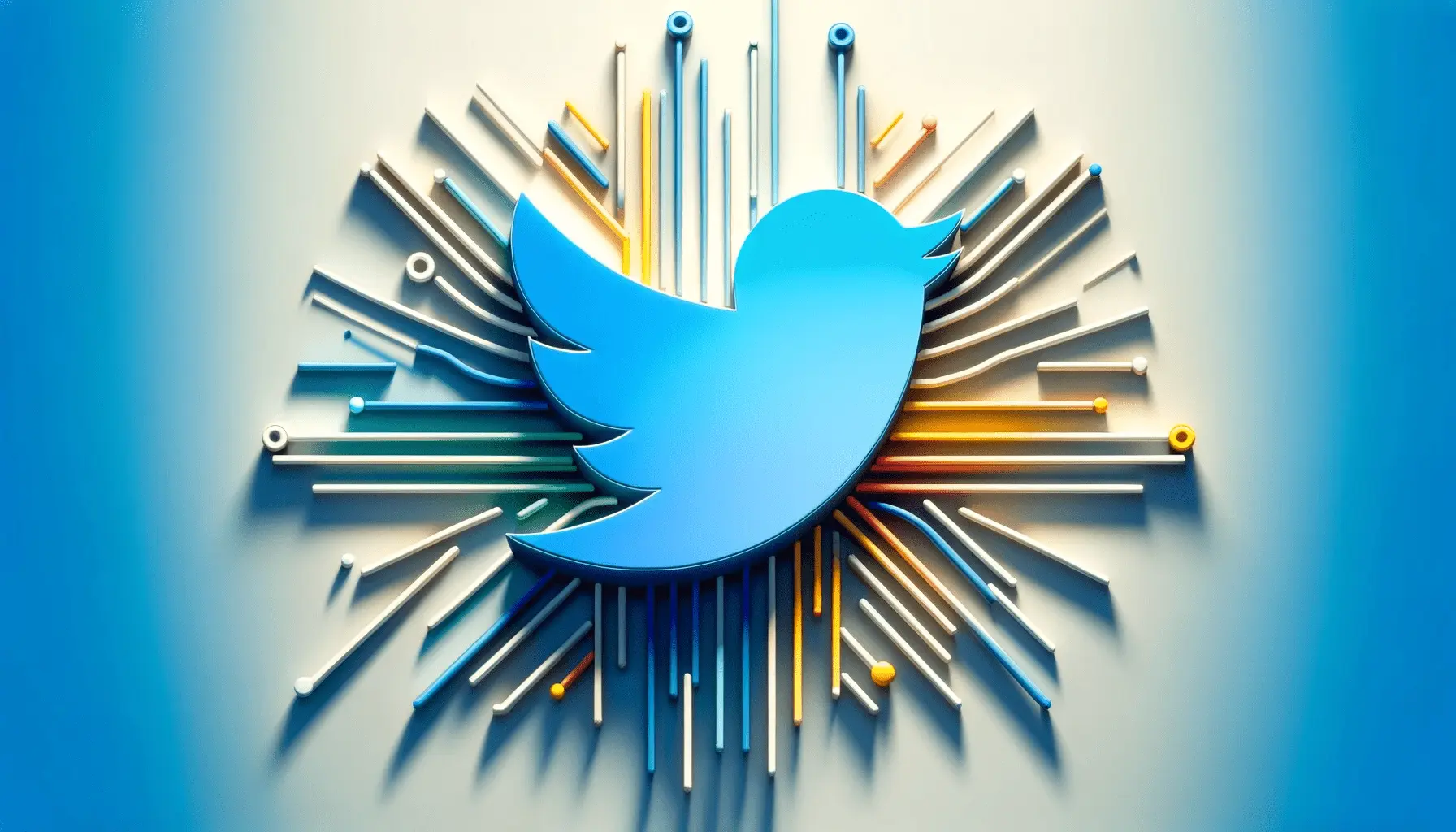Exploring the dynamic landscape of advertising revenue on Twitter offers a fascinating glimpse into the evolving world of digital marketing.
As a platform that has consistently been at the forefront of real-time communication, Twitter presents unique opportunities and challenges for advertisers.
This article delves into the current trends, strategies, and statistics shaping ad revenue on Twitter, providing valuable insights for marketers and businesses alike.
Understanding Twitter’s ad revenue trends is crucial in today’s digital age, where social media platforms play a pivotal role in shaping consumer behavior and brand perception.
With its vast user base and unique engagement capabilities, Twitter has become a critical platform for advertising.
This exploration will not only highlight the current state of ad revenue on Twitter but also offer a roadmap for leveraging these insights for effective marketing strategies.
- Twitter’s Advertising Ecosystem: An Overview
- The Impact of Sponsored Hashtags and Trends
- Exploring Twitter’s Video Ad Formats
- Targeting and Personalization in Twitter Ads
- Challenges and Opportunities in Twitter’s Ad Landscape
- Measuring Success: Analytics and ROI in Twitter Advertising
- Future Trends in Twitter Advertising
- Best Practices for Twitter Advertising Success
- Conclusion: Harnessing the Power of Twitter’s Ad Revenue Potential
- FAQs: Navigating Twitter Ad Revenue Trends
Twitter’s Advertising Ecosystem: An Overview
The advertising ecosystem on Twitter is a complex and ever-evolving landscape.
It’s a platform where immediacy and brevity reign, making it a unique space for advertisers to engage with their audience.
Twitter’s ad revenue primarily stems from various formats, including promoted tweets, sponsored hashtags, and video ads.
These formats cater to the platform’s fast-paced nature, allowing brands to deliver concise, impactful messages to their target audience.
One of the key strengths of Twitter’s advertising ecosystem is its ability to target specific demographics and interests.
Advertisers can tailor their campaigns based on user behavior, interests, and even real-time conversations.
This level of targeting precision, combined with Twitter’s real-time nature, offers a potent mix for brands looking to increase engagement and drive conversions.
Understanding Promoted Tweets
Promoted tweets are a fundamental component of Twitter’s ad revenue.
These are regular tweets purchased by advertisers who want to reach a wider group of users or spark engagement from their existing followers.
Unlike organic tweets, promoted tweets are labeled as an ad and can be targeted to specific audiences.
They offer a direct and straightforward way for brands to increase their visibility and message reach on the platform.
What makes promoted tweets effective is their seamless integration into the user’s timeline.
They don’t interrupt the user experience but rather blend into the flow of conversation.
This subtlety is key in an era where consumers are increasingly averse to intrusive advertising methods.
Key Point: The effectiveness of Twitter’s advertising lies in its ability to blend seamlessly into the user’s timeline, providing a non-intrusive yet impactful way for brands to communicate their message.
The Impact of Sponsored Hashtags and Trends
Sponsored hashtags and trends represent another vital aspect of Twitter’s advertising revenue.
These tools allow brands to create or join conversations on a large scale, tapping into the platform’s communal nature.
Sponsored hashtags are particularly effective for campaigns aiming to increase brand awareness or promote specific events or product launches.
When a brand sponsors a hashtag, it gains visibility at the top of Twitter’s trending topics.
This placement not only boosts the brand’s exposure but also encourages user participation and engagement.
The interactive nature of hashtags fosters a sense of community and conversation around the brand’s message.
Case Studies of Successful Sponsored Hashtags
- Brand Launches: Many brands have successfully leveraged sponsored hashtags to launch new products. By creating a unique, memorable hashtag, they generate buzz and encourage users to share their experiences or thoughts related to the product.
- Event Promotion: Events, both virtual and physical, have seen heightened engagement through sponsored hashtags. These hashtags serve as a rallying point for discussions, updates, and user-generated content, amplifying the event’s reach.
- Social Causes: Brands aligning with social causes have used sponsored hashtags to raise awareness and foster community support. These campaigns often see high engagement due to their emotional and social resonance.
Exploring Twitter’s Video Ad Formats
Twitter’s video ad formats have emerged as a powerful tool for advertisers, capitalizing on the growing consumer preference for video content.
Video ads on Twitter come in various forms, including pre-roll ads attached to premium video content and standalone video promotions.
These formats cater to the visual nature of today’s digital consumers, offering a more engaging and immersive experience than traditional text-based ads.
Video ads on Twitter are designed to capture attention quickly.
They often feature auto-play and sound-off by default, ensuring they grab the user’s attention without being intrusive.
This approach aligns with the fast-paced, scroll-through nature of the platform, making video ads a highly effective medium for storytelling and brand messaging.
Effectiveness of Twitter Video Ads
- Higher Engagement: Video ads on Twitter tend to have higher engagement rates compared to other ad formats. The dynamic and engaging nature of video content resonates well with the Twitter audience.
- Brand Storytelling: Videos offer a unique opportunity for brands to tell their stories in a compelling and visually appealing way, leading to better brand recall and emotional connection with the audience.
- Boosting Conversion Rates: Video ads have been shown to increase conversion rates, as they provide a more comprehensive view of the product or service, thereby influencing purchasing decisions.
Note: Twitter’s video ad formats, with their higher engagement and storytelling capabilities, present a significant opportunity for brands to connect with their audience in a meaningful way.
Targeting and Personalization in Twitter Ads
At the heart of Twitter’s advertising success is its sophisticated targeting and personalization capabilities.
These features allow advertisers to reach specific segments of Twitter’s diverse user base with tailored messages.
By leveraging data on user behavior, interests, and demographics, Twitter provides a highly customizable advertising experience.
Demographic and Interest-Based Targeting
Twitter’s demographic targeting enables advertisers to reach users based on age, gender, location, and language.
This level of granularity ensures that ads are shown to the most relevant audience.
Interest-based targeting takes this a step further by allowing brands to connect with users based on their interests, hobbies, and the accounts they follow.
This approach ensures that the ads resonate with the audience’s preferences and lifestyles.
Behavioral Targeting and Re-targeting
Behavioral targeting on Twitter involves analyzing user activities, such as the tweets they engage with and the topics they follow.
This data helps in creating highly personalized ad campaigns.
Re-targeting, on the other hand, focuses on users who have previously interacted with the brand, either on Twitter or on the brand’s website, enabling advertisers to re-engage with potential customers.
- Custom Audiences: Twitter allows brands to upload their customer lists to target existing customers or lookalike audiences, enhancing the effectiveness of their ad campaigns.
- Keyword Targeting: Advertisers can target users based on the keywords in their recent tweets or the tweets they recently engaged with, aligning the ad content with the user’s current interests.
Utilizing Twitter Analytics for Improved Targeting
Twitter Analytics plays a crucial role in refining ad targeting.
It provides insights into campaign performance, audience demographics, and engagement metrics.
By analyzing this data, advertisers can continuously optimize their campaigns for better performance and ROI.
Twitter’s analytics tools also offer detailed reporting on ad impressions, conversions, and engagement rates.
This information is crucial for understanding the effectiveness of different targeting strategies and making data-driven decisions for future campaigns.
Idea: Leveraging Twitter’s advanced targeting and analytics capabilities can significantly enhance the relevance and impact of ad campaigns, leading to improved engagement and conversion rates.
Challenges and Opportunities in Twitter’s Ad Landscape
While Twitter offers a robust platform for advertisers, it’s not without its challenges.
Navigating these challenges and capitalizing on the opportunities they present is key to successful advertising on Twitter.
Adapting to Platform Changes and User Behavior
Twitter is known for its fast-paced changes, both in terms of platform updates and shifts in user behavior.
Advertisers must stay agile, adapting their strategies to align with these changes.
This includes keeping up with new ad formats, algorithm updates, and evolving user preferences.
Staying informed and flexible allows brands to leverage Twitter’s dynamic environment effectively.
Maximizing Ad Spend Efficiency
With the increasing competition for user attention on Twitter, maximizing ad spend efficiency is crucial.
This involves optimizing campaigns for higher ROI, which can be achieved through precise targeting, creative ad design, and continuous performance analysis.
Efficient budget allocation ensures that every dollar spent contributes to achieving campaign objectives.
- Embracing Emerging Trends: Twitter is a platform where trends emerge and evolve rapidly. Brands that can quickly identify and embrace these trends can create more engaging and relevant ad content.
- Balancing Promotional and Organic Content: While paid advertising is essential, balancing it with organic engagement is crucial. Brands should maintain an active presence on Twitter, engaging with their audience through regular tweets, replies, and retweets.
Ensuring Brand Safety and Compliance
Brand safety is a significant concern on Twitter, given the open and real-time nature of the platform.
Advertisers need to ensure that their ads appear in a safe and appropriate context.
This involves using tools and settings provided by Twitter to control ad placements and avoid association with harmful content.
Compliance with advertising regulations and standards is also crucial.
Advertisers must adhere to Twitter’s advertising policies and guidelines to avoid penalties and maintain a positive brand image.
Leveraging Twitter’s Unique Features for Innovative Campaigns
Twitter’s unique features, such as hashtags, Twitter polls, and live tweeting, offer creative opportunities for advertisers.
Brands can use these features to create interactive and engaging campaigns that stand out.
For example, live tweeting during events or using polls to gather consumer opinions can drive higher engagement and brand visibility.
Featured Info: The key to success on Twitter lies in adapting to its dynamic nature, maximizing ad spend efficiency, ensuring brand safety, and creatively leveraging its unique features for innovative campaigns.
Measuring Success: Analytics and ROI in Twitter Advertising
Understanding and measuring the success of advertising campaigns on Twitter is crucial for optimizing strategy and maximizing return on investment (ROI).
Twitter provides a range of analytics tools that help advertisers track performance, understand audience behavior, and make data-driven decisions.
Key Performance Indicators (KPIs) for Twitter Ads
Identifying the right KPIs is essential for evaluating the effectiveness of Twitter ad campaigns.
Common KPIs include engagement rate (likes, comments, retweets), click-through rate (CTR), conversion rate, and cost per action (CPA).
Monitoring these metrics helps advertisers assess the impact of their ads and identify areas for improvement.
Utilizing Twitter Analytics for Campaign Insights
Twitter Analytics offers a comprehensive overview of campaign performance, including detailed metrics on reach, engagement, and audience demographics.
By analyzing this data, advertisers can gain insights into what resonates with their audience and adjust their strategies accordingly.
This continuous process of analysis and optimization is key to improving campaign effectiveness over time.
- Audience Insights: Understanding the audience is critical for successful advertising. Twitter Analytics provides data on audience interests, behaviors, and demographics, enabling advertisers to tailor their content and targeting strategies.
- Campaign Reporting: Regular reporting on campaign performance helps advertisers track progress against objectives. This includes analyzing trends over time and comparing different ad formats and targeting strategies.
ROI Calculation and Optimization
Calculating ROI is fundamental to evaluating the financial success of Twitter ad campaigns.
This involves comparing the revenue generated from the campaign against the cost of the ads.
To optimize ROI, advertisers should focus on improving conversion rates, reducing costs, and enhancing ad relevance and engagement.
Case Studies: Successful Twitter Campaigns
Examining case studies of successful Twitter campaigns can provide valuable lessons for advertisers.
These case studies often highlight innovative use of ad formats, effective targeting strategies, and creative content that resonates with the audience.
Learning from these examples can inspire new ideas and approaches for future campaigns.
Truth: Effective measurement and analysis of campaign performance are critical for maximizing ROI and achieving long-term success in Twitter advertising.
Future Trends in Twitter Advertising
The landscape of Twitter advertising is continually evolving, shaped by technological advancements, changing user behaviors, and broader social and economic factors.
Staying ahead of these trends is crucial for advertisers looking to maintain a competitive edge on the platform.
Emergence of AI and Machine Learning
Artificial intelligence (AI) and machine learning are set to play a significant role in the future of Twitter advertising.
These technologies can enhance ad targeting and personalization, making campaigns more effective and efficient.
AI algorithms can analyze large datasets to identify patterns and insights, helping advertisers optimize their strategies in real-time.
Incorporating Augmented Reality (AR) and Virtual Reality (VR)
Augmented reality (AR) and virtual reality (VR) technologies offer exciting new possibilities for Twitter advertising.
These immersive technologies can create engaging and interactive ad experiences, capturing the audience’s attention in novel ways.
For instance, AR filters or VR experiences linked to hashtags could provide unique brand interactions.
- Increased Focus on Video Content: Video content is expected to continue its growth in popularity on Twitter. Advertisers will likely invest more in video ads, including live streaming and interactive video formats, to engage with the audience more effectively.
- Greater Emphasis on User Privacy: With growing concerns around data privacy, Twitter may introduce more privacy-focused advertising features. Advertisers will need to balance effective targeting with respect for user privacy and data protection regulations.
Adapting to Changes in Consumer Behavior
Consumer behavior on social media, including Twitter, is constantly changing.
Advertisers must stay attuned to these shifts, such as the increasing demand for authenticity and social responsibility in brand messaging.
Adapting to these changes will be key to maintaining relevance and effectiveness in Twitter advertising.
Exploring New Advertising Formats and Strategies
Twitter is likely to introduce new ad formats and features in response to market trends and technological advancements.
Advertisers should be prepared to explore and experiment with these new opportunities, whether they involve interactive elements, new targeting capabilities, or integration with other digital platforms.
Idea: The future of Twitter advertising will be shaped by advancements in AI and immersive technologies, shifts in consumer behavior, and the introduction of new ad formats and strategies.
Best Practices for Twitter Advertising Success
To maximize the impact of their advertising efforts on Twitter, brands and marketers need to adhere to a set of best practices.
These guidelines are designed to enhance ad effectiveness, foster audience engagement, and ultimately drive better campaign results.
Crafting Compelling and Concise Ad Content
The essence of Twitter lies in its brevity and immediacy.
Advertisers should create content that is concise yet compelling, capable of capturing the audience’s attention quickly.
This involves using clear, impactful messaging and eye-catching visuals that resonate with the target audience.
Engaging with the Audience
Twitter is not just a broadcasting platform; it’s a space for conversation and engagement.
Brands should actively engage with their audience, responding to comments, participating in relevant conversations, and using interactive elements like polls and questions to foster a sense of community.
- Timing and Frequency: The timing and frequency of tweets can significantly impact their effectiveness. Brands should identify the best times to post based on their audience’s activity patterns and maintain a consistent posting schedule to keep their audience engaged.
- Utilizing Hashtags Strategically: Hashtags are a powerful tool on Twitter for increasing the visibility of ad content. Brands should use relevant, trending, or branded hashtags to extend their reach and participate in broader conversations.
Leveraging Twitter’s Targeting Capabilities
Twitter offers advanced targeting options that allow advertisers to reach specific audience segments.
Brands should leverage these capabilities to deliver personalized ad experiences, targeting users based on interests, behaviors, demographics, and more.
Continuous Testing and Optimization
Successful advertising on Twitter requires continuous testing and optimization.
Brands should regularly experiment with different ad formats, creative approaches, and targeting strategies, analyzing performance data to refine their campaigns for better results.
Staying Up-to-Date with Platform Updates
Twitter is constantly evolving, with new features and updates that can impact advertising strategies.
Brands need to stay informed about these changes and adapt their approaches accordingly to remain effective and relevant on the platform.
Key Point: Success in Twitter advertising hinges on creating engaging content, actively engaging with the audience, leveraging targeting capabilities, continuously optimizing campaigns, and staying updated with platform changes.
Conclusion: Harnessing the Power of Twitter’s Ad Revenue Potential
In the ever-evolving digital landscape, Twitter has emerged as a formidable platform for advertisers seeking to engage with a dynamic and interactive audience.
The insights gleaned from ad revenue trends on Twitter reveal a world of opportunities for brands to connect, engage, and convert their target demographics.
As we’ve explored, the key to unlocking Twitter’s advertising potential lies in understanding and leveraging its unique features and capabilities.
Strategic Integration of Ad Revenue Insights
For businesses and marketers, the strategic integration of insights from Twitter’s ad revenue trends is crucial.
This involves not only adapting to the platform’s fast-paced nature but also capitalizing on its targeting precision and diverse ad formats.
By doing so, advertisers can create campaigns that resonate deeply with their audience, driving both engagement and conversions.
- Emphasizing the importance of concise and compelling content that aligns with Twitter’s character.
- Utilizing Twitter’s advanced targeting options for personalized ad experiences.
- Engaging with the audience to foster a sense of community and brand loyalty.
Future-Proofing Twitter Advertising Strategies
Looking ahead, future-proofing advertising strategies on Twitter will be essential.
This means staying abreast of emerging trends, such as the integration of AI and AR/VR technologies, and adapting to changes in consumer behavior and platform updates.
By doing so, advertisers can ensure their campaigns remain effective and relevant in the dynamic world of Twitter advertising.
In conclusion, the trends in ad revenue on Twitter paint a picture of a platform ripe with potential for savvy advertisers.
By understanding and leveraging the unique aspects of Twitter, from its targeting capabilities to its interactive ad formats, brands can create impactful campaigns that resonate with their audience.
The future of advertising on Twitter is bright, and those who can navigate its complexities will reap the rewards of a deeply engaged and responsive audience.
Enjoyed the article? Let its author handle your social media ads. Visit our service page to get started!
FAQs: Navigating Twitter Ad Revenue Trends
Understanding Twitter’s ad revenue trends is crucial for marketers aiming to leverage the platform effectively. Here are some frequently asked questions that shed light on this topic.
Twitter’s main ad revenue sources include promoted tweets, sponsored hashtags, and video ads, each offering unique engagement opportunities.
Twitter’s targeting enhances ad performance by allowing precise audience segmentation based on interests, behaviors, and demographics.
Video ads play a crucial role in Twitter’s ad strategy, offering dynamic and engaging content that resonates with a visually oriented audience.
Twitter’s ad revenue has seen fluctuations, with recent trends showing a shift towards more interactive and targeted advertising formats.
Advertisers on Twitter face challenges like adapting to platform changes, ensuring brand safety, and maximizing ad spend efficiency.
Sponsored hashtags are highly effective in Twitter campaigns, boosting visibility and fostering user engagement around specific topics.
Future trends in Twitter advertising include the integration of AI, AR/VR technologies, and a continued focus on video content.
Advertisers should focus on crafting compelling content, engaging with the audience, and leveraging Twitter’s targeting capabilities.










